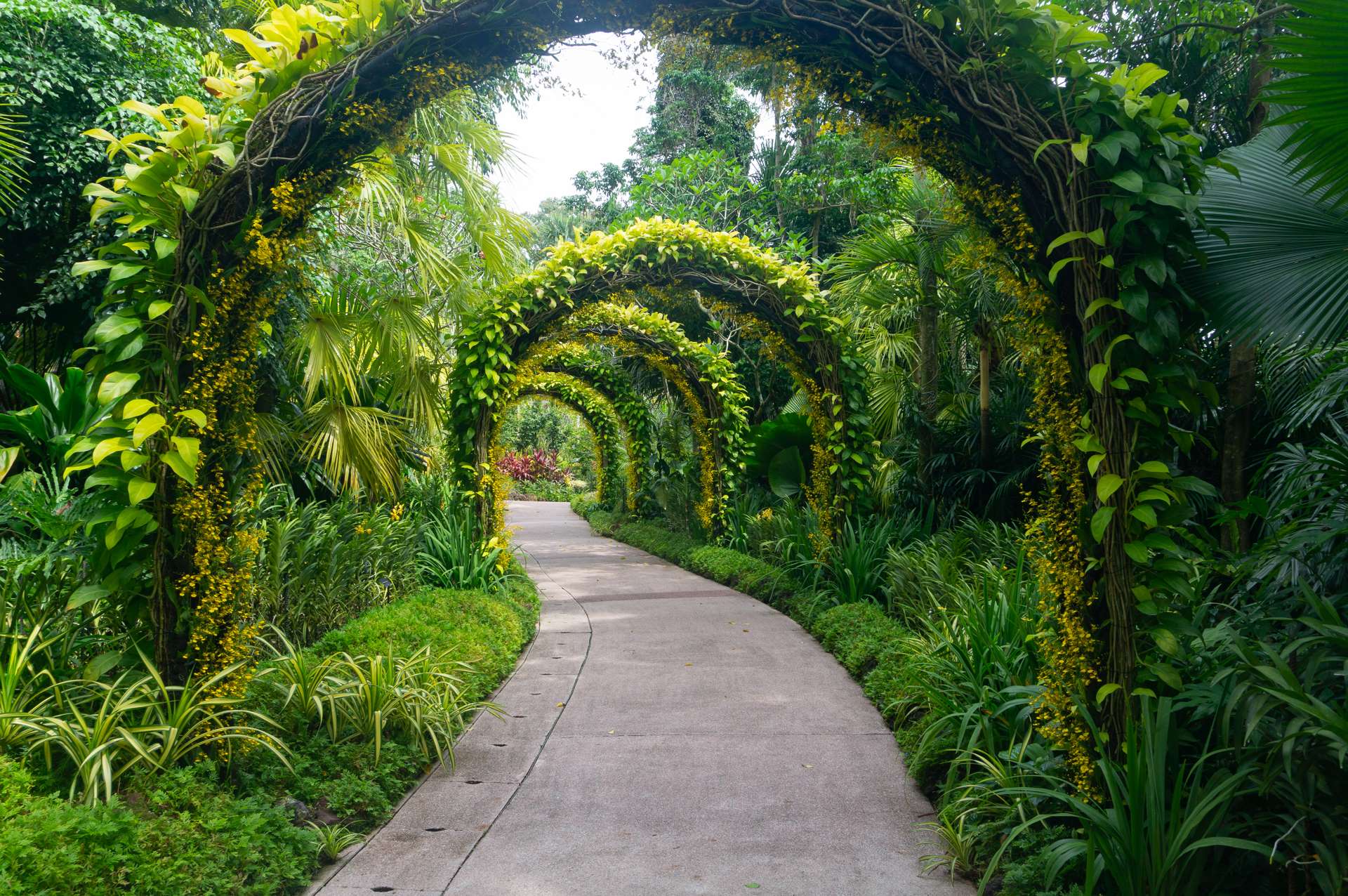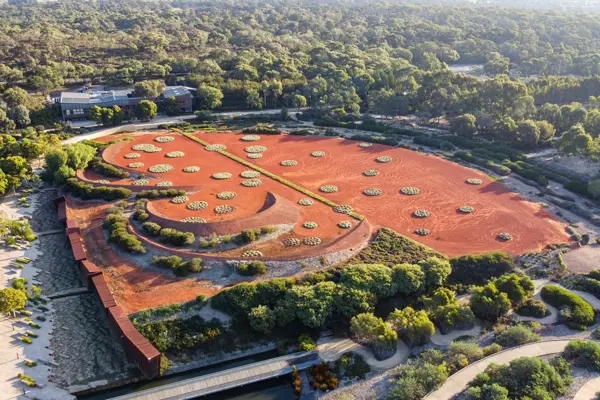Explore the Beauty: Your Ultimate Guide to the Cranbourne Botanic Gardens Map

Cranbourne Botanic Gardens, a stunning showcase of Australia’s diverse flora, invites visitors to immerse themselves in its natural beauty. Spanning over 300 hectares, these gardens are not just a feast for the eyes but also a sanctuary for wildlife and a place for reflection. Navigating this expansive landscape can be daunting, but with the right map in hand, exploring the various gardens, walking trails, and unique features becomes an enjoyable adventure. In this ultimate guide, we will provide essential insights and tips to enhance your visit, ensuring you fully appreciate the enchanting wonders of the Cranbourne Botanic Gardens.
- Cranbourne Botanic Gardens Map: A Guide to Exploring Nature
- How long does it take to walk around Cranbourne botanic gardens?
- How long does it take to walk around botanic gardens?
- Why are the Cranbourne Botanical Gardens significant?
- How long does it take to walk around the Royal Botanic Gardens in Melbourne?
- Questions from Our Readers
Cranbourne Botanic Gardens Map: A Guide to Exploring Nature
The Cranbourne Botanic Gardens map is an essential tool for visitors seeking to navigate the vast, beautifully landscaped grounds of this remarkable site. Spanning over 300 acres, the gardens are home to an impressive collection of Australian native plants, scenic walking trails, and unique landscapes that showcase the diversity of the country’s flora. The map highlights key areas such as the stunning Australian Garden, which features a variety of ecosystems, walking paths, and recreational spots, allowing guests to plan their visit and appreciate the natural beauty effectively.
Key Features of the Cranbourne Botanic Gardens Map
The map of the Cranbourne Botanic Gardens includes several key features designed to enhance the visitor experience. Important points of interest are marked, including various garden sections, picnic areas, and restroom facilities, ensuring that guests can easily locate essential amenities. Furthermore, trails are clearly outlined, allowing visitors to explore the gardens in an organized manner while admiring native flora and diverse landscapes. Highlighting educational displays and signage, the map also provides additional information about the significance of various plants and habitats within the gardens.
Accessibility Information
Visitors will find essential accessibility information on the Cranbourne Botanic Gardens map, which indicates the best routes for those with mobility challenges. The paths are mostly flat and well-maintained, making it easier for individuals using wheelchairs or strollers to navigate the popular sites throughout the gardens. Additionally, the map points out accessible facilities, such as toilets and parking areas, ensuring that everyone can enjoy the beauty of the gardens without unnecessary obstacles.
Walking Trails and Duration
The Cranbourne Botanic Gardens map outlines different walking trails, each offering a unique experience and showcasing various plant communities and landscapes. Ranging from short strolls suitable for families to longer walks for enthusiastic hikers, the map provides estimated durations for each trail, helping visitors gauge their time commitment. By offering a variety of paths, the map ensures that guests can select a route tailored to their preferences and physical capabilities, enhancing their overall experience of the gardens.
Visitor Information Centers
Strategically placed throughout the gardens, Visitor Information Centers are marked on the Cranbourne Botanic Gardens map, providing guests with access to knowledgeable staff and resources. At these centers, visitors can gather additional information about the gardens, purchase souvenirs, and participate in guided tours. The map not only directs visitors to these centers but also outlines their hours of operation, ensuring everyone can benefit from the support available when exploring the grounds.
Events and Programs
The Cranbourne Botanic Gardens map also highlights areas designated for special events and educational programs, which occur throughout the year. Marked locations inform visitors about upcoming workshops, community events, and guided tours that aim to enhance understanding and appreciation of Australia's native flora. By consulting the map, guests can plan their visit to coincide with specific events or programs, making their experience more engaging and informative.
| Feature | Description |
|---|---|
| Walking Trails | Clearly marked paths for trails of various lengths and difficulty levels. |
| Visitor Centers | Locations for visitor assistance, souvenirs, and guided tours. |
| Accessibility | Information on wheelchair-friendly paths and facilities. |
| Events | Designated areas for workshops and community gatherings. |
| Educational Resources | Information about plant species and ecosystems throughout the gardens. |
How long does it take to walk around Cranbourne botanic gardens?
To walk around the Cranbourne Botanic Gardens, it typically takes about 1.5 to 2 hours. This duration can vary based on individual pace, the particular route taken, and whether visitors choose to stop and enjoy the various attractions and landscapes within the gardens. The total distance of the main walking trails is approximately 3 kilometers (1.9 miles), which provides an excellent opportunity to explore the stunning native flora and fauna.
Average Walking Time
The average walking time through the Cranbourne Botanic Gardens is influenced by several factors, including:
- Pace of Walking: Some visitors may prefer a leisurely stroll, which could extend the visit, while others might walk briskly.
- Stops for Photography: With many scenic spots, guests often stop to take photos, adding to the overall time.
- Interest in Flora: Those particularly interested in plants might take more time to read information plaques and look closely at plant species.
Recommended Routes
There are several recommended routes within the gardens that can impact the overall time spent exploring:
- Main Circuit: The primary pathway takes visitors through key highlights of the gardens.
- Shorter Trails: There are also shorter trails for those who may not wish to commit to a longer experience.
- Guided Tours: Choosing a guided tour can provide an enriched experience and may require additional time.
Attractions Along the Walk
The gardens feature multiple attractions that can entice visitors to spend extra time exploring:
- Bonsai Collection: This stunning display showcases intricate bonsai trees that often captivate visitors.
- Wetlands Area: A peaceful spot to observe birds and aquatic life, encouraging visitors to pause and enjoy nature.
- Visitor Centre: With information on local flora, it’s a great place to learn more about the gardens before or after walking.
Weather Considerations
The weather can also play a significant role in the walking experience at Cranbourne Botanic Gardens:
See also:
- Sunny Days: Clear, sunny weather may encourage longer visits as people are more inclined to stay outdoors.
- Rainy Conditions: Wet weather may shorten walks as visitors might seek shelter or cancel their plans altogether.
- Seasonal Changes: Each season presents different flora to appreciate, potentially increasing or decreasing walking time based on interests.
Accessibility Options
For those concerned about accessibility, the gardens provide various options that can affect how long it takes to explore:
- Wheelchair Access: Most pathways are wheelchair accessible, allowing a wider audience to enjoy the gardens.
- Walking Aids: Visitors with mobility issues can bring walking aids, which may require slower pacing.
- Rest Areas: Benches and rest areas are available along the trails for those needing breaks.
How long does it take to walk around botanic gardens?

Walking around botanic gardens can vary significantly in time depending on several factors. On average, visitors might spend 1 to 3 hours exploring these gardens. The duration depends on the garden's size, the number of attractions, the trails available, and individual preferences for exploration.
Factors Influencing Time Spent
The time it takes to walk through a botanic garden can be affected by various factors:
- Size of the Garden: Larger gardens with extensive pathways and diverse plant collections may take longer to explore.
- Visitor Preferences: Individuals who enjoy taking photographs or reading informational plaques may spend more time at various exhibits.
- Events and Activities: Special events like guided tours or workshops can also extend the time you spend in the garden.
Typical Walking Paths
Most botanic gardens design their paths to maximize visitor experience. Walking paths may vary in difficulty and accessibility, which affects the time taken:
- Loop Trails: Many gardens have loop trails that allow visitors to see all parts of the garden without backtracking.
- Linear Paths: Some gardens may have longer, linear paths requiring more time to traverse from one end to the other.
- Rest Areas: Gardens often include benches and rest areas, encouraging visitors to take breaks and enjoy the scenery, which can prolong the visit.
Visitor Activities
Engaging in various activities within the botanic gardens can influence the duration of your visit:
- Photography: Many visitors spend extra time capturing the beauty of plants and landscapes, which can significantly extend their stay.
- Workshops: Participating in gardening workshops or educational programs can require additional time.
- Enjoying Nature: Simply taking time to sit and enjoy the natural surroundings can also add to the duration of the visit.
Seasonal Considerations
The time taken to walk around botanic gardens can vary with seasons. Seasons affect not only the scenery but also visitor traffic:
- Bloom Times: Visiting during peak bloom seasons may invite visitors to spend more time appreciating the blossoms.
- Weather Conditions: Pleasant weather might encourage longer visits compared to hot or rainy days.
- Seasonal Events: Gardens often host seasonal events that can add to the duration of visits.
Visitor Guidelines
Each botanic garden may have specific guidelines about how much time you should plan for your visit:
- Suggested Visit Duration: Check the garden's website; many recommend a certain timeframe based on their layout and exhibits.
- Tour Information: Some gardens offer guided tours that have fixed durations, typically around 1 hour.
- Closing Time: Be mindful of the garden's closing time to ensure you have enough time to see all exhibits.
Why are the Cranbourne Botanical Gardens significant?

The Cranbourne Botanical Gardens, part of the Victorian State Government’s Royal Botanic Gardens, are significant for several reasons. Located in Cranbourne, Australia, these gardens play a vital role in conservation, education, recreation, and the promotion of Australia’s unique flora. Covering over 300 hectares, the gardens are a sanctuary for native plants and serve as an essential hub for research and public engagement with biodiversity.
Conservation of Native Flora
The Cranbourne Botanical Gardens are essential for the conservation of Australia’s unique native plants. They focus on the preservation of endangered species and provide a habitat for local wildlife. Various conservation programs and research initiatives are implemented here to protect native flora, ensuring the survival of rare and threatened plant species.
- Endangered plant species are cultivated for research and propagation.
- Research partnerships contribute to biodiversity initiatives across Australia.
- Public awareness campaigns emphasize the importance of preserving native flora.
Education and Research Opportunities
The gardens serve as a hub for education and research on Australian botany. They offer numerous educational programs, workshops, and tours designed to engage the community and enhance understanding of Australia’s plant life. The gardens are also involved in significant scientific research, contributing valuable knowledge to the field of botany.
- Educational programs for schools promote environmental literacy.
- Workshops for adults focus on gardening and sustainable practices.
- Collaborations with universities enhance academic research opportunities.
Tourism and Recreation
As a major tourist destination, the Cranbourne Botanical Gardens attract visitors from across Australia and beyond. They provide recreational spaces with walking trails, picnic areas, and stunning landscapes, making them a perfect location for families and nature enthusiasts to explore and enjoy.
See also:
- Walking trails showcase the diverse ecosystems within the gardens.
- Picnic areas provide family-friendly environments for outdoor activities.
- Special events and exhibitions attract diverse visitor demographics.
Showcasing Australian Landscapes
The gardens are designed to showcase the beauty and diversity of Australian landscapes. With themed sections representing different Australian ecosystems, visitors can experience a wide variety of native plants and learn about their ecological importance, enhancing appreciation for Australia’s natural heritage.
- Themed gardens represent various climatic regions of Australia.
- Unique landscaping reflects the natural habitats of Australian flora.
- Seasonal displays offer changing vistas year-round for visitors.
Community Engagement and Involvement
The Cranbourne Botanical Gardens actively foster community engagement through various programs and volunteer opportunities, inviting locals to participate in gardening activities and conservation efforts. This involvement fosters a sense of ownership and responsibility towards local environmental issues.
- Volunteer programs enable community members to contribute to garden maintenance.
- Community events provide platforms for sharing knowledge about sustainability.
- Engagement initiatives encourage local participation in conservation activities.
How long does it take to walk around the Royal Botanic Gardens in Melbourne?
The time it takes to walk around the Royal Botanic Gardens in Melbourne varies depending on your pace, the specific route you take, and how much time you spend exploring different areas. Generally, if you walk at a moderate pace and do not stop significantly, it can take about 1 to 2 hours to complete a circuit of the main paths. If you’re planning to take in the sights, enjoy the gardens, and perhaps stop for photos or a picnic, you might want to allocate 2 to 3 hours or even more.
Average Walking Time
Walking around the Royal Botanic Gardens can vary in duration based on several factors. Here's what you might consider:
- Walking Pace: A leisurely stroll will take longer than a brisk walk.
- Route Selection: Choosing direct paths will shorten your time, while wandering may extend it.
- Timing Your Visit: Peak hours might slow down your progress due to increased foot traffic.
Points of Interest
The gardens are expansive and filled with many attractions that can entice you to pause. Notable spots include:
- Fern Gully: A tranquil area ideal for rest and reflection.
- Lake and Islands: Perfect for a scenic view and photography.
- Rose Garden: A highlight during blooming season, worth a dedicated visit.
Tips for Enjoying Your Walk
Making the most of your visit requires some planning. Consider these tips:
- Wear Comfortable Shoes: The gardens have uneven paths and you'll do a lot of walking.
- Bring Water: Staying hydrated is essential, especially in warmer months.
- Check for Events: Special programs or events may offer additional attractions during your visit.
Accessibility Options
If walking the entire length seems daunting, there are accessible options available:
- Dropped Kerbs: Ensure ease of access for those with mobility issues.
- Wheelchair Rentals: Available to enhance your visit and ease navigation.
- Guided Tours: Consider a guided tour for a more structured experience.
Seasonal Considerations
The time you choose to visit can impact both your experience and duration:
- Spring: Blooming flowers can make walks longer, with numerous photo opportunities.
- Summer: Hot conditions may require more frequent breaks.
- Autumn: Foliage changes provide beautiful scenery, possibly extending your visit.
Questions from Our Readers
Where can I find the Cranbourne Botanic Gardens map?
The Cranbourne Botanic Gardens map can typically be found at the visitor center upon arrival, or you can download a digital version from the official website of the gardens for more convenient access.
What information is included in the Cranbourne Botanic Gardens map?
The Cranbourne Botanic Gardens map includes detailed information about the walking trails, plant collections, and important landmarks within the gardens, helping visitors navigate and enjoy the natural beauty effectively.
Are there any guided tours that utilize the Cranbourne Botanic Gardens map?
Yes, there are guided tours available that use the Cranbourne Botanic Gardens map to showcase significant areas and provide insights into the native flora and ecological significance of the gardens.
Is the Cranbourne Botanic Gardens map available in different languages?
The Cranbourne Botanic Gardens map is generally provided in English, but translated versions may be available at the visitor center or upon request, ensuring accessibility for all visitors.
See also:

If you want to read more articles like Explore the Beauty: Your Ultimate Guide to the Cranbourne Botanic Gardens Map, we recommend you check out our Landscaping category.
Leave a Reply
Related Articles